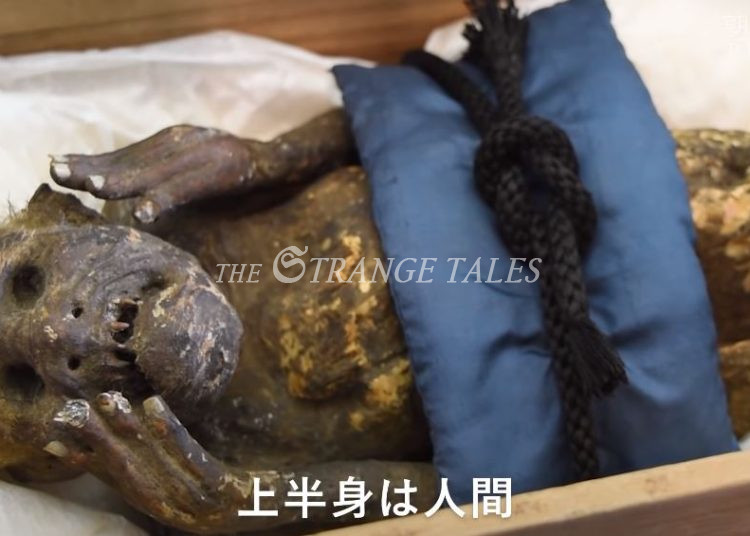According to www.asahi.com, a “mermaid mummy” maintained in a shrine has long been revered, the stuff of nightmares, and a subject of intrigue.
Currently, a study has begun to scientifically examine the mummified creature, which has a human-like upper body and a fish-like lower body.
Around the fall, scientists from Kurashiki University of Science and the Arts and other institutions want to make their findings public.

The 30-centimeter-long priceless specimen was taken out of a paulownia box on February 2 by Kozen Kuida, 60, the top priest of the Enjuin temple in Asakuchi, the prefecture. He was doing this in the CT scanning department of the university’s veterinary hospital.
The mummy was lying face up on an examination table, its hands clasped over its lips as it seemed to be screaming. The mummy has scales on its lower body and hair on its head in addition to fangs and claws.
A letter found in the same box as the “dried mermaid” claims that between 1736 and 1741, the creature was captured in a fishing net off the coast of Tosa Province (now Kochi Prefecture).
Kiyoaki Sato (1905–1998), a natural historian from Satosho in the prefecture, left behind some writings that Hiroshi Kinoshita, 54, a board member of the Okayama Folklore Society, discovered upon and used as inspiration for the project.
The first Japanese encyclopedia on “yokai” ghosts, hobgoblins, and other supernatural beings from Japanese folklore is credited to Sato.
After learning that the mermaid mummy was kept at Enjuin, Kinoshita contacted representatives from the university and the temple to carry out the investigation, he claimed.
The morphological examination of the upper body of the Enjuin temple specimen is being handled by 54-year-old Takafumi Kato, a professor at the university with a focus on paleontology. It will be his first investigation into a fantastical being.






